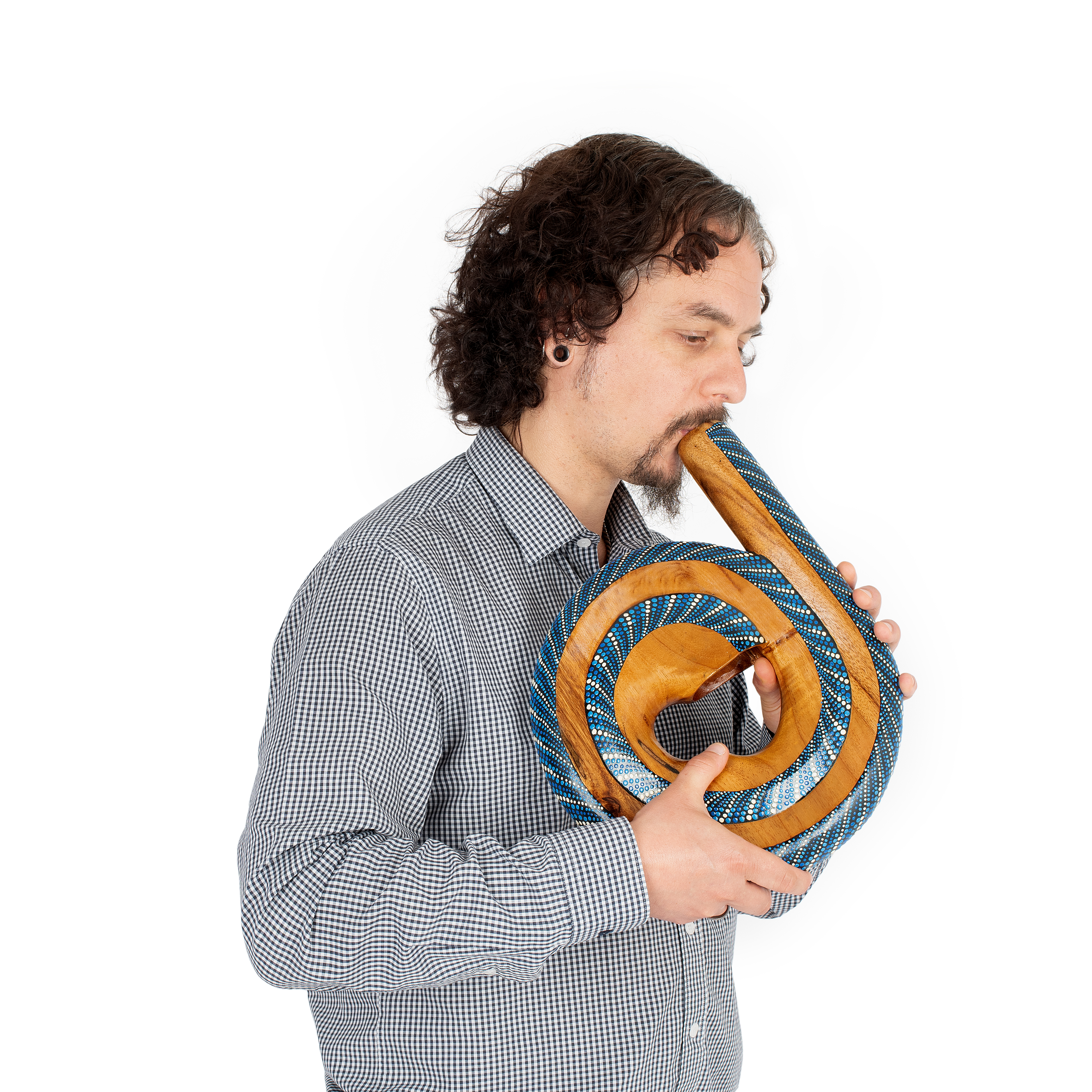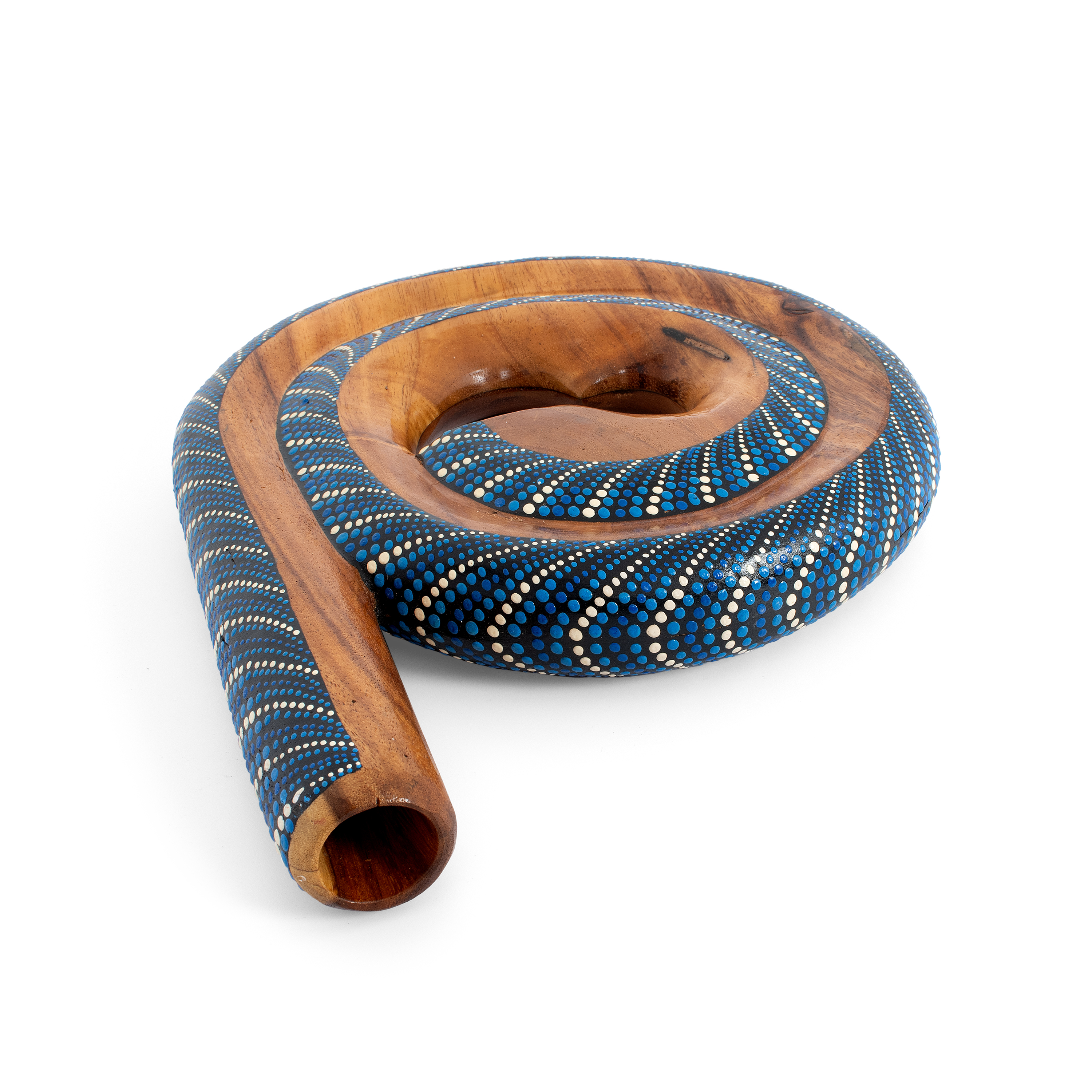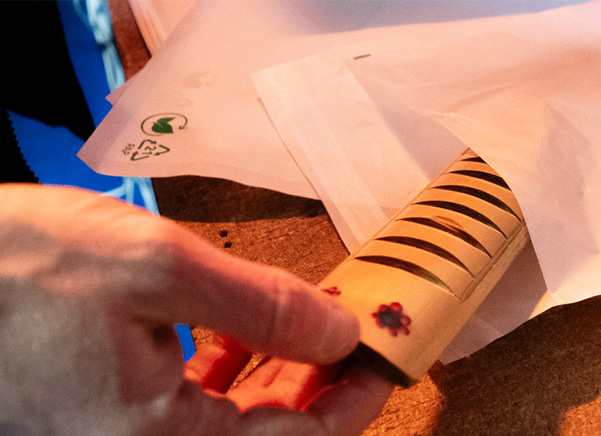Introducing the Percussion Plus Honestly Made spiral didgeridoo
The Percussion Plus Honestly Made spiral didgeridoo is a compact and lightweight version of a full-length didgeridoo. Its unique shape is designed to allow the airflow inside the instrument to create low tones. It’s made in Bali, and island in Indonesia, using suar wood. The wood gets split down the middle and carved hollow, then the two halves are glued back together and a glossy finish is added.
The intricate, hand-painted pattern on the spiral makes it a wonderful instrument to display at home or in the classroom. The aboriginal dots also add an extra sensory element for young players, and makes it easy to hold when playing.
Each instrument is hand made using traditional materials and methods. See below for more information about the Honestly Made range of instruments from Percussion Plus.
These items are musical instruments not toys and there may be small parts on or in some of them. Younger players should use them under supervision.






